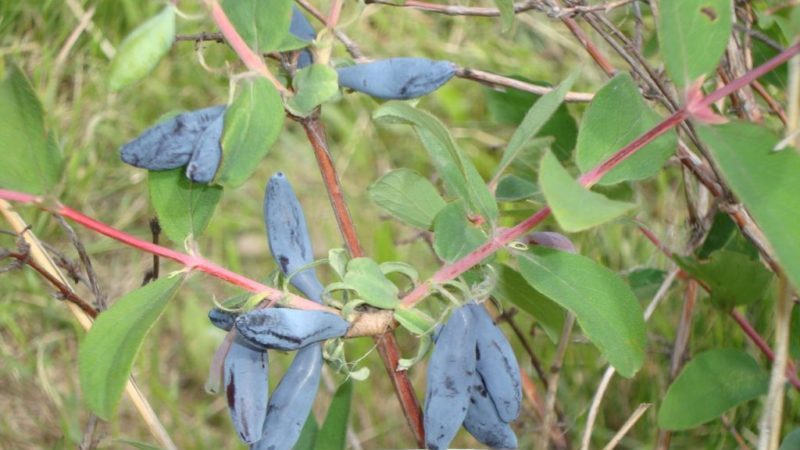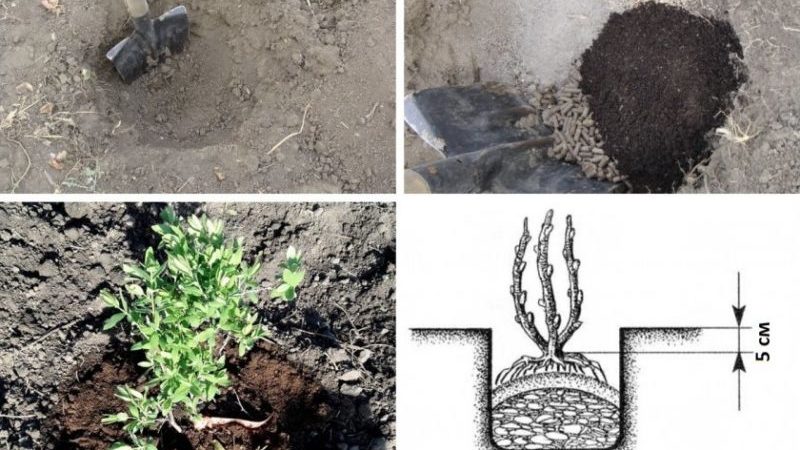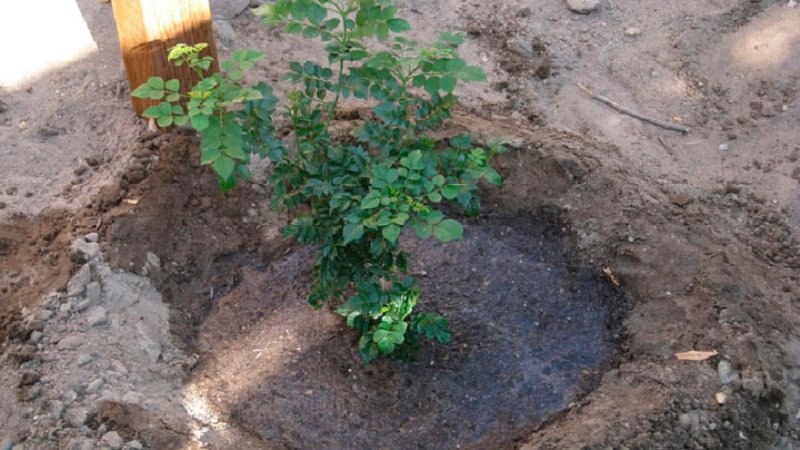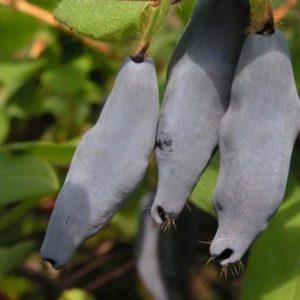Honeysuckle variety Blue spindle: variety description, planting and care
The blue spindle is one of the most popular honeysuckle varieties grown in Russia. The plant is valued for its resistance to cold and drought, high yield and ease of maintenance. The fruits have a sweet and sour taste and are suitable for fresh use or harvesting.
The content of the article
Description of the variety of honeysuckle Blue spindle
Blue Spindle is an early variety with high productivity and large fruits.
History of origin and distribution
The plant was bred in Siberia by free pollination of honeysuckle Start breeders ZI Luchnik, ZP Zholobova and IP Kalinina. An entry in the State Register of the Blue Spindle appeared in 1989.
Reference. The variety got its name because of the berries that look like an old spinning tool.
The blue spindle is grown throughout Russia, in the countries of near and far abroad.
Characteristics and description of the bushes

The bushes are vigorous, reach a height of 1 m. The crown is round, medium thickening. Green shoots are directed upward at an acute angle.
Large leaves are oblong-oval and dark green in color.
Resistant to temperatures
This variety perfectly adapts to temperature fluctuations and can withstand frosts down to -45 ° C. The bushes can withstand the harsh Siberian winters, which are detrimental to most other berry crops.
Honeysuckle does not stop bearing fruit even at + 35 ... + 40 ° С.
Moisture and drought resistance
The variety is drought-resistant, but in a dry period with insufficient watering, the berries are bitter. Abundant hydration is required only in extreme heat; at normal times, it is enough to water the plant once a week.
Honeysuckle feels good even in swampy areas, but groundwater located close to the surface (at a distance of less than 1 m) brings harm to the root system.
Disease and pest resistance
This honeysuckle variety has a high immunity to various pests and diseases such as spider mites, aphids, cercosporiasis.
Characteristics and description of fruits
The berries are large (about 3 cm long and 1 cm in diameter). The shape is bumpy with a flat bottom and a pointed top. The skin color is dark blue, there is a thick waxy coating.
The consistency of the pulp is tender, the taste is sweet and sour. The average yield of the variety is 2 kg per 1 bush.
Important! The flavor of the berries varies depending on the region. So, in arid areas, the fruits are slightly bitter.
The berries include:
- tannins;
- Sahara;
- organic acids;
- pectins;
- vitamins C, P, B1, B2, B9, beta-carotene;
- magnesium, sodium, phosphorus, calcium, potassium, iron.
Areas of use
Berries are consumed fresh, make fruit drinks and preserves from them. Frozen fruits are used as additives for wines and various tinctures.
Advantages and disadvantages of the variety
The advantages of the Blue Spindle include:
- early ripening;
- resistance to frost and drought;
- high immunity to pests and diseases;
- size and taste of berries;
- decorative type of bush.
The disadvantages include the high shedding of ripe fruits and the dependence of the culture on pollinators.
Growing technology
It is not difficult to grow such a variety of honeysuckle on the site due to its unpretentiousness. The main thing is to study the basic rules of cultivation and follow them.
Optimal conditions
Although Blue Spindle Honeysuckle is undemanding to growing conditions, it is best to plant it in a sunny location, protected from drafts. Groundwater should be at least 1 m from the surface.
The shrub is picky about the soil, but when planted in depleted soil, it is fertilized with dry branches and chips, which, when rotting, will saturate the ground and warm the root system.
Terms and rules of landing

It is better to plant honeysuckle with an open root system before winter, about a month before the onset of cold weather.
Important! A plant with a closed root system is planted at any time of the year.
Landing technology:
- Dig holes. The size of each is 0.4 × 0.5 m.The distance between the pits is left at least 1.5 m.
- A mixture is made from the dug soil by adding 10 kg of compost, 300 g of wood ash, 150 g of superphosphate and about 30 g of potassium salt to it.
- A drainage layer is laid out in the hole, and a nutrient mixture is placed on it.
- A seedling is placed in the middle of the hole, its root system is straightened, and then covered with earth and poured with a bucket of water.
- When the water is absorbed, the pit is filled with earth and tamped.
- Having made a near-trunk circle, the bush is watered with 1 bucket of water and mulched with sawdust, peat or straw.
Further care

Shrub care is reduced to watering, feeding and pruning. Moisten it once a week. For an adult plant, 3-4 buckets of water are enough.
The Blue Spindle is fed 3 times a year. The first time this is done in the spring, right after the snow melts. Mix mulch with 4 kg of peat and lay out under each bush. The next fertilizer is applied during the formation of buds: the soil around the trunk is sprinkled with ash.
Reference. It is useful to feed the plant with ash at the end of summer.
The third feeding is carried out at rest of the plant. To do this, around the bush, at a short distance from the trunk, make a ditch about 0.2 m deep and add 1 tbsp. l. superphosphate. The deepening is covered with earth, leveled and watered.
The first 3 years after planting, only dry or damaged branches are cut. Then 2-3 old branches are removed, keeping a stump about 8 cm long, on which new shoots will appear next year.
In the spring, prophylactic pruning is carried out: the branches growing down or inside the crown, woven together, are removed.

Possible problems, diseases, pests
This variety is rarely exposed to diseases and attacks of pests, but with thickened plantings or the presence of a number of other diseased plants, there is a risk of developing:
- various spots;
- powdery mildew;
- blackening of shoots;
- tuberculariosis.
For the prevention of diseases in spring and autumn, plants and the ground under them are treated with a 3% solution of Bordeaux liquid. Affected shrubs are sprayed with systemic fungicides.
The most common pest of this variety is fingerwings. For the prevention and control of insects, insecticides are used.
Wintering
The blue spindle easily tolerates even severe frosts, therefore it does not require special preparation and shelter for the winter. In the fall, the shrub is pruned and fed.
Reproduction
Honeysuckle is propagated in such ways:
- By cuttings. Annual shoots are plucked together with the "heel" (a piece of bark with a thin layer of wood) from the mother bush and rooted in the greenhouse.
- By division. A part of the root system with young shoots is separated from the bush and planted.
- Layers. A young branch is buried in soil, waiting for roots to appear on its lower part, and then separating it from the mother bush.
Features of cultivation depending on the region

The variety is suitable for cultivation in any region of Russia and has almost no differences in fit and care.
The only thing that is important to consider for those who want to grow this honeysuckle: in arid areas it is required water more often so that the berries do not taste bitter.
Pollinating varieties
The blue spindle belongs to self-infertile varieties, therefore, to obtain a harvest, varieties of honeysuckle of Kamchatka selection are planted next to it:
- Morena;
- Tomichka;
- Cinderella;
- The blue bird.
Gardeners reviews
Most gardeners, in their reviews of the variety, note high yields and ease of care.
Olga, Vologda region: "I planted a Blue Spindle 3 years ago. During this time, the bush has grown quite strongly. She does not require shelter for the winter, it brings harvest every year. The berries are large, we love to eat them fresh and freeze them for the winter. The only drawback is that the fruits quickly fall off the bush. "
Victoria, Angarsk: “I chose Blue Spindle honeysuckle for the site, because it practically does not need any care, which is very important at my age. The variety pleases with its yield: on average, I collect about 2 kg of berries from 1 bush. I love making jam out of them. "
Nikolay, Nizhny Novgorod:“I like this variety for its yield and fruit size, but they taste mediocre. Therefore, we don't eat fresh berries - we make jam out of them. "
Conclusion
The blue spindle is suitable for those gardeners who love the sweet and sour taste of honeysuckle and do not want to devote much time to caring for the shrub. To get a good harvest of large sweet and sour berries, it is enough to water the plant once a week, cut it off twice a year and feed it three times a season.
For the winter, the shrub does not need to be covered, it is rarely exposed to diseases and pest attacks. For active fruiting, 3-4 Kamchatka pollinator varieties are planted on the site.